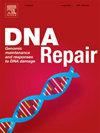DNA repair-related heritable photosensitivity syndromes: Mutation landscape in a multiethnic cohort of 17 multigenerational families with high degree of consanguinity
Abstract
Inherited photosensitivity syndromes are a heterogeneous group of genetic skin disorders with tremendous phenotypic variability, characterized by photosensitivity and defective DNA repair, especially nucleotide excision repair. A cohort of 17 Iranian families with heritable photosensitivity syndromes was evaluated to identify their genetic defect. The patients' DNA was analyzed with either whole-exome sequencing or RNA sequencing (RNA-Seq). The interpretations of the genomic results were guided by genome-wide homozygosity mapping. Haplotype analysis was performed for cases with recurrent mutations. RNA-Seq, in addition to mutation detection, was also utilized to confirm the pathogenicity. Thirteen sequence variants, including six previously unreported pathogenic variants, were disclosed in 17 Iranian families, with XPC as the most common mutated gene in 10 families (59%). In one patient, RNA-Seq, as a first-tier diagnostic approach, revealed a non-canonical homozygous germline variant: XPC:c.413–9 T > A. The Sashimi plot showed skipping of exon 4 with dramatic XPC down-expression. Haplotype analysis of XPC:c.2251–1 G>C and XPC:1243 C>T in four families showed common haplotypes of 1.7 Mb and 2.6 Mb, respectively, denoting a founder effect. Lastly, two extremely rare cases were presented in this report: a homozygous UVSSA:c .1990 C>T was disclosed, and ERCC2-related cerebro-oculo-facio-skeletal (COFS) syndrome with an early childhood death. A direct comparison of our data with the results of previously reported cohorts demonstrates the international mutation landscape of DNA repair-related photosensitivity disorders, although population-specific differences were observed.

 求助内容:
求助内容: 应助结果提醒方式:
应助结果提醒方式:


